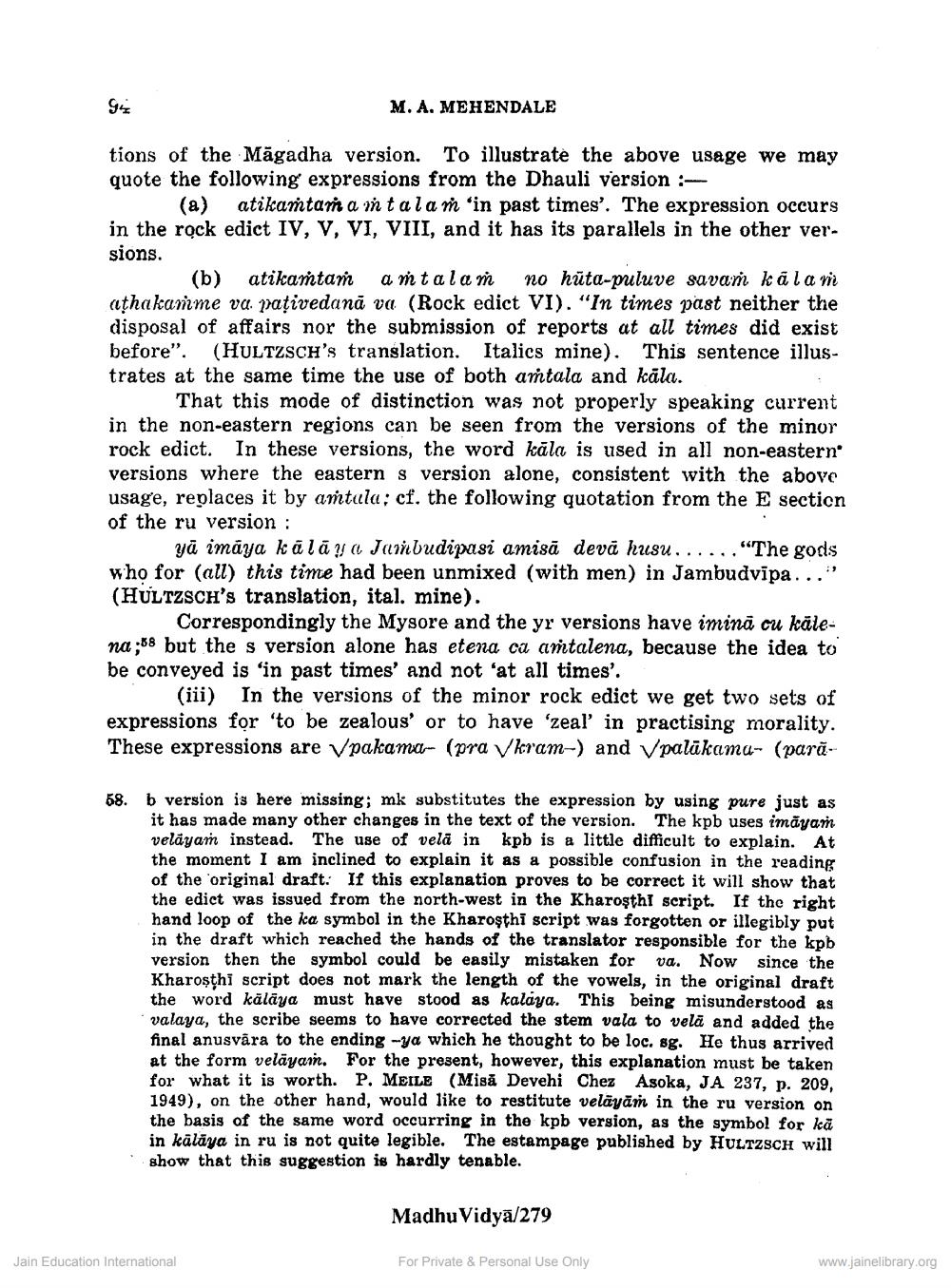________________
9
M.A. MEHENDALE
Tha
tions of the Māgadha version. To illustrate the above usage we may quote the following expressions from the Dhauli version :
(a) atikamtamantalan 'in past times'. The expression occurs in the rock edict IV, V, VI, VIII, and it has its parallels in the other versions.
(b) atikamtan antalan no huta-puluve savan kalam athakanme va pațivedanā va (Rock edict VI). "In times past neither the disposal of affairs nor the submission of reports at all times did exist before". (HULTZSCH's translation. Italics mine). This sentence illustrates at the same time the use of both amtala and kāla.
That this mode of distinction was not properly speaking current in the non-eastern regions can be seen from the versions of the minor rock edict. In these versions, the word kāla is used in all non-eastern versions where the eastern s version alone, consistent with the above usage, replaces it by amtula; cf. the following quotation from the E section of the ru version :
yā imāya kālāya Jarnbudipasi amisă devā husu...... "The gods who for (all) this time had been unmixed (with men) in Jambudvīpa... (HULTZSCH's translation, ital. mine).
Correspondingly the Mysore and the yr versions have imină cu kälena ;88 but the s version alone has etena ca antalena, because the idea to be conveyed is 'in past times' and not 'at all times'.
(iii) In the versions of the minor rock edict we get two sets of expressions for 'to be zealous' or to have 'zeal in practising morality. These expressions are pakama- (pra Vkram-) and vpalūkamu- (para
58. b version is here missing; mk substitutes the expression by using pure just as
it has made many other changes in the text of the version. The kpb uses imayam velayam instead. The use of vela in kpb is a little difficult to explain. At the moment I am inclined to explain it as a possible confusion in the reading of the original draft. If this explanation proves to be correct it will show that the edict was issued from the north-west in the Kharoşthi script. If the right hand loop of the ka symbol in the Kharoşthi script was forgotten or illegibly put in the draft which reached the hands of the translator responsible for the kpb version then the symbol could be easily mistaken for va. Now since the Kharosthi script does not mark the length of the vowels, in the original draft the word kälāya must have stood as kalaya. This being misunderstood as valaya, the scribe seems to have corrected the stem vala to vela and added the final anusvāra to the ending -ya which he thought to be loc. sg. He thus arrived at the form velayam. For the present, however, this explanation must be taken for what it is worth. P. MEILE (Misă Devehi Chez Asoka, JA 237, p. 209. 1949), on the other hand, would like to restitute velāyān in the ru version on the basis of the same word occurring in the kpb version, as the symbol for kā in kālāva in ru is not quite legible. The estampage published by HULTZSCH will show that this suggestion is hardly tenable.
Madhu Vidyā/279
Jain Education International
For Private & Personal Use Only
www.jainelibrary.org




